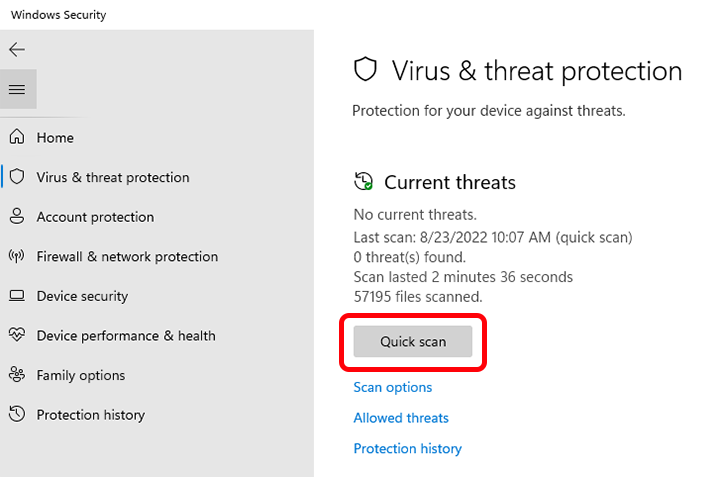How to Scan for Malware on Windows
Malware, short for malicious software, poses a significant threat to Windows users. It can cause data breaches, identity theft, and system crashes. To protect your computer from malware, it is essential to regularly scan your system for any potential threats. In this article, we will discuss the various methods you can use to scan for malware on Windows.
1. Use Windows Security
Windows Security, previously known as Windows Defender, is Microsoft’s built-in antivirus program. It provides real-time protection against viruses, ransomware, and other types of malware. To perform a malware scan using Windows Security, follow these steps:
- Open Windows Security by clicking on the shield icon in the taskbar or searching for it in the Windows search bar.
- Click on “Virus & threat protection.”
- Click on “Quick scan” to scan your system for malware quickly or “Scan options” for more scanning options.
- Follow the on-screen instructions to complete the scan.
2. Use Third-Party Antivirus Software
While Windows Security provides basic protection, third-party antivirus software can offer additional features and more robust malware detection capabilities. Some popular antivirus programs for Windows include Norton, McAfee, and Bitdefender. To scan for malware using third-party antivirus software, follow the specific instructions provided by the software provider.
3. Use Malwarebytes Anti-Malware
Malwarebytes Anti-Malware is a powerful tool specifically designed to detect and remove malware from Windows systems. To scan for malware using Malwarebytes, follow these steps:
- Download and install Malwarebytes Anti-Malware from the official website.
- Open the program and click on the “Scan” tab.
- Choose the type of scan you want to perform (Quick, Full, or Custom).
- Click on “Scan now” to initiate the scan.
- Follow the on-screen instructions to remove any detected malware.
4. Use Windows Malicious Software Removal Tool
The Windows Malicious Software Removal Tool is a free security tool provided by Microsoft to remove specific malware from Windows systems. To run a scan using the Windows Malicious Software Removal Tool, follow these steps:
- Open the Windows Malicious Software Removal Tool by searching for it in the Windows search bar.
- Click on “Next” to start the scan.
- Follow the on-screen instructions to complete the scan and remove any detected malware.
5. Schedule Regular Scans
To ensure that your system remains protected from malware, it is crucial to schedule regular scans using the methods mentioned above. Set up automatic scans to run daily, weekly, or monthly, depending on your preference. Regular scans can help detect and remove malware before it causes significant damage to your system.
Conclusion
Scanning for malware on Windows is an essential step in maintaining the security of your system. By using built-in tools like Windows Security, third-party antivirus software, Malwarebytes Anti-Malware, and the Windows Malicious Software Removal Tool, you can detect and remove malware before it causes harm. Remember to schedule regular scans to ensure ongoing protection against malware threats.
